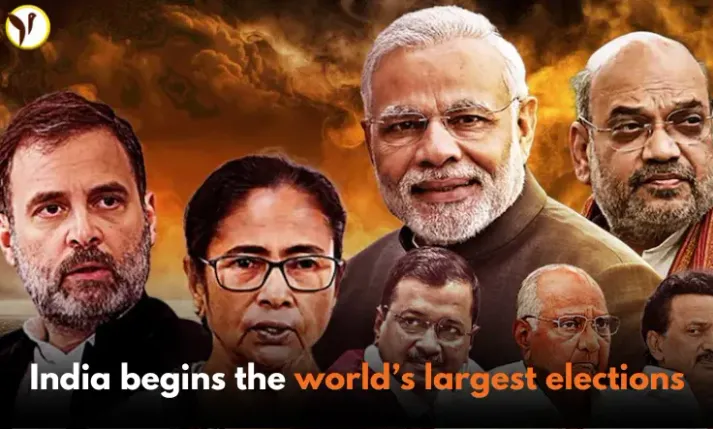India has commenced the voting process for its general election, touted as the largest democratic exercise globally. The polls opened on Friday for the first phase, marking the beginning of a six-week-long electoral marathon that involves a staggering 969 million eligible voters.
Today the phase 1 out of the 7 phases of voting has started that will cover 102 constituencies spreading across 21 states and union territories. While the counting for the same will be held on 4th June.
For a better detail about all the phases look below:
With the voting started, Modi went on to X to give a message to the voters. “I urge all those voting in these seats to exercise their franchise in record numbers,” he stated. “I particularly call upon the young and first time voters to vote in large numbers. After all, every vote counts and every voice matters!”
Prime Minister Narendra Modi, seeking a rare third consecutive term, leads the charge amid high stakes for his Bharatiya Janata Party (BJP). Under Modi's leadership, the BJP has spearheaded significant economic and cultural transformations, pivoting towards Hindu majoritarianism.
The BJP's campaign manifesto focuses on job creation, poverty alleviation programs, and national development, aiming to position India as a global manufacturing hub and achieve energy independence by 2047. Modi's vision extends to securing a permanent seat on the United Nations Security Council and bidding for the 2036 Summer Olympics.
However, Modi's tenure has not been without criticism. While lauded for economic growth and infrastructure projects, concerns over rising inequality, religious polarization, and youth unemployment persist. Critics argue that Modi's policies have eroded India's secular fabric, fueling Islamophobia and marginalizing religious minorities.
Challenging the BJP is the Indian National Congress and its INDIA alliance, advocating for democratic values, social justice, and minority rights. The opposition's manifesto pledges to safeguard civil liberties, promote gender equality, and restore media freedom.
The electoral battleground spans 543 parliamentary seats, with Uttar Pradesh, Tamil Nadu, and West Bengal emerging as pivotal states. Uttar Pradesh, with 80 seats, holds significant sway in determining the electoral outcome, while Tamil Nadu and West Bengal witness intense political rivalries.
The electoral process showcases India's diversity and logistical challenges. From bustling metropolises to remote tribal regions, voters exercise their franchise amidst varying climatic conditions. The Election Commission's meticulous planning ensures the inclusion of marginalized communities and upholds the integrity of the electoral process.
With the voting started in the world’s largest economy, it is yet to see what will be the results for these elections!







